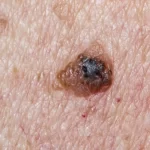At her heaviest weight of 310 pounds, fitness blogger Irvy Sapharti had reached her lowest point. To achieve weight loss she devised a personalized diet plan of eating clean while performing daily cardio workouts.
Cording notes that while the Ornish diet was originally devised to lower cholesterol, it’s also effective at aiding weight loss. Low in saturated fat and encouraging filling up on fruits, vegetables, whole grains and lean proteins; its primary goals include cholesterol lowering.
1. Eat More Fruits and Vegetables
Nutritious fruits and vegetables should be part of every diet plan. Their vitamins, minerals, and fiber content help fill you up without adding unnecessary calories to meals, and satisfying sweet tooth cravings while helping avoid empty-calorie options like soda and candy. Try including fresh fruits and veggies into each meal but be sure to select different colors when possible.
Registered dietitian nutritionist Ilana Muhlstein reports that many people don’t consume enough fruits and veggies due to disliking their taste; but she emphasizes the importance of finding ways to appreciate them over time. Her advice: fill half your plate with these nutrient-rich foods like the Mediterranean diet which has been associated with reduced risks of heart disease, cancer, and Alzheimer’s.
2. Eat More Lean Protein
Protein may conjure images of bodybuilders, but it’s an integral component of a nutritious diet. According to the Dietary Guidelines, adults should aim for 46-56 grams of protein each day.
Bearden advises that to meet your protein goals effectively, whole foods such as lean meats (chicken, fish, pork and beef); low-fat dairy products like milk, yogurt, cottage cheese, ricotta and eggs; legumes (beans, peas and lentils); tofu/soy products and nuts/seeds are the ideal sources.
She recommends adding protein powder to fruit smoothies and having protein bars, hummus and low-fat string cheese on hand as between-meal snacks. Eating more protein may also increase calorie burn, since your body must work harder to chew and digest it – known as the thermogenic effect of food.
3. Eat More Healthy Fats
Fats are an integral component of your diet, providing creamy texture, rich flavor and scent in many foods. Eating more healthy fats will boost metabolism and decrease insulin resistance that could thwart weight loss efforts.
Keep your cholesterol down by choosing unsaturated fats that are both heart-healthy and contain omega-3 fatty acids – like those found in avocados, peanut butter, seeds and plant oils such as olive, safflower, sesame and canola oils.
Keep in mind that each gram of fat contains nine calories, so be careful how much you consume daily. Like with proteins and carbohydrates, too many fat calories may lead to weight gain if consumed in excess. Aim to incorporate 25-35% of your calorie intake from healthy sources like nuts, fish or plants as part of a balanced diet.
4. Eat More Whole Grains
Whole grains have taken some hits thanks to high-fat keto and lectin-eliminating diets, but they should still play an integral part in any balanced diet. Overeating whole grains won’t harm you; in fact, they’re better than overindulging on refined grains!
Whole grains contain more fibre, helping you feel fuller for longer and aiding fat loss. They may also help lower cholesterol and triglyceride levels which contribute to heart disease risk.
Switch out white pasta, granola bars and bread for whole-wheat or brown varieties instead. Try including quinoa and buckwheat in your meals for even greater nutrition – but always read labels thoroughly as many “whole grain” products contain large amounts of added sugar!
5. Drink More Water
Water is the ultimate hunger-buster; drinking more can help curb it and can easily be integrated into any diet as a great complement to low-cal beverages like herbal tea, coffee and smoothies.
Water helps cleanse your system, potentially aiding fat loss. “All that stored fat needs to leave your body somehow, and water is an ideal means of doing just that,” states Forberg.
She notes that drinking water can also help curb cravings for high-caloric foods and beverages such as starchy, salty, sugary or fatty snacks, soda or high-calorie coffee beverages or unhealthy beverages such as alcohol. If plain water bores you, try adding healthful add-ins like lemon slices, fresh mint leaves or ginger slices – even pieces of seasonal fruit to add some zest!







 The Essential Guide to Digestive Enzymes Australia: Boost Your Gut Health
The Essential Guide to Digestive Enzymes Australia: Boost Your Gut Health  Latest Breakthroughs in Acne Treatment
Latest Breakthroughs in Acne Treatment  The Rise of Virtual Fitness Classes
The Rise of Virtual Fitness Classes  Fun and Creative Ways to Stay Active Indoors
Fun and Creative Ways to Stay Active Indoors  Linking Oral Health to Overall Wellbeing
Linking Oral Health to Overall Wellbeing  Can You Exercise While Pregnant?
Can You Exercise While Pregnant?  Is Skin Cancer Curable?
Is Skin Cancer Curable?  How Much Is Dental Bonding?
How Much Is Dental Bonding?  The Rise of Telemedicine and Its Impact on Healthcare
The Rise of Telemedicine and Its Impact on Healthcare 